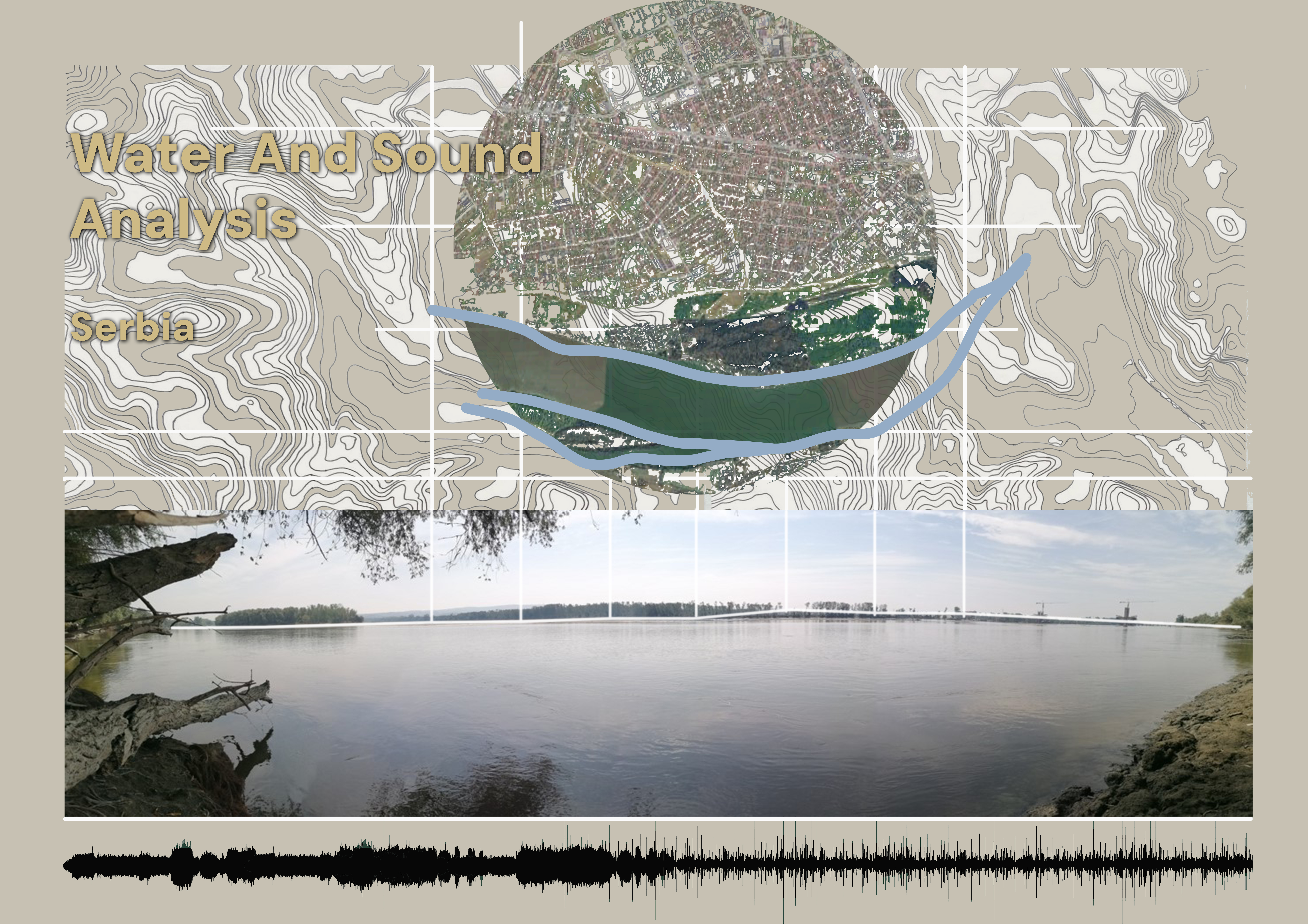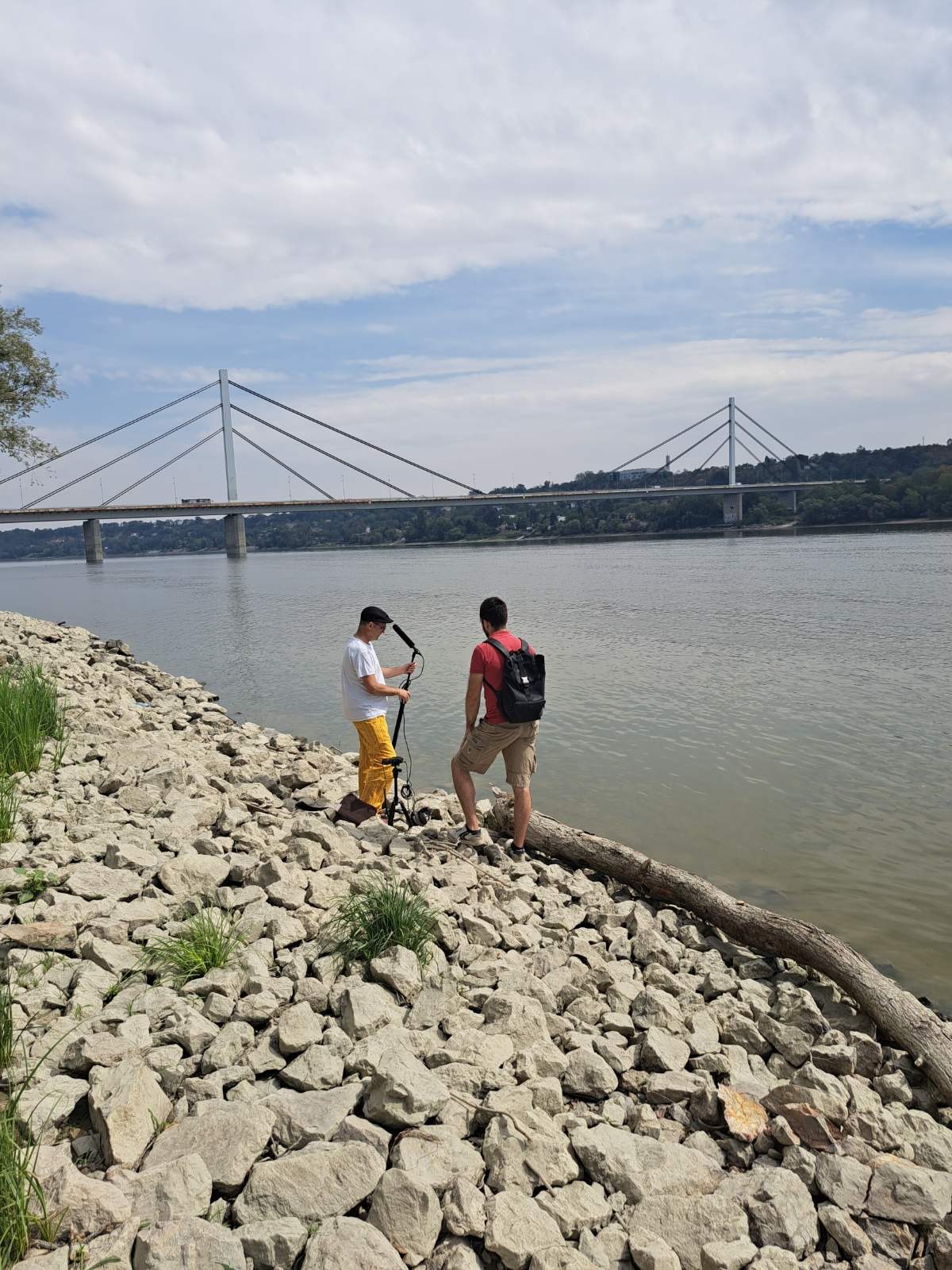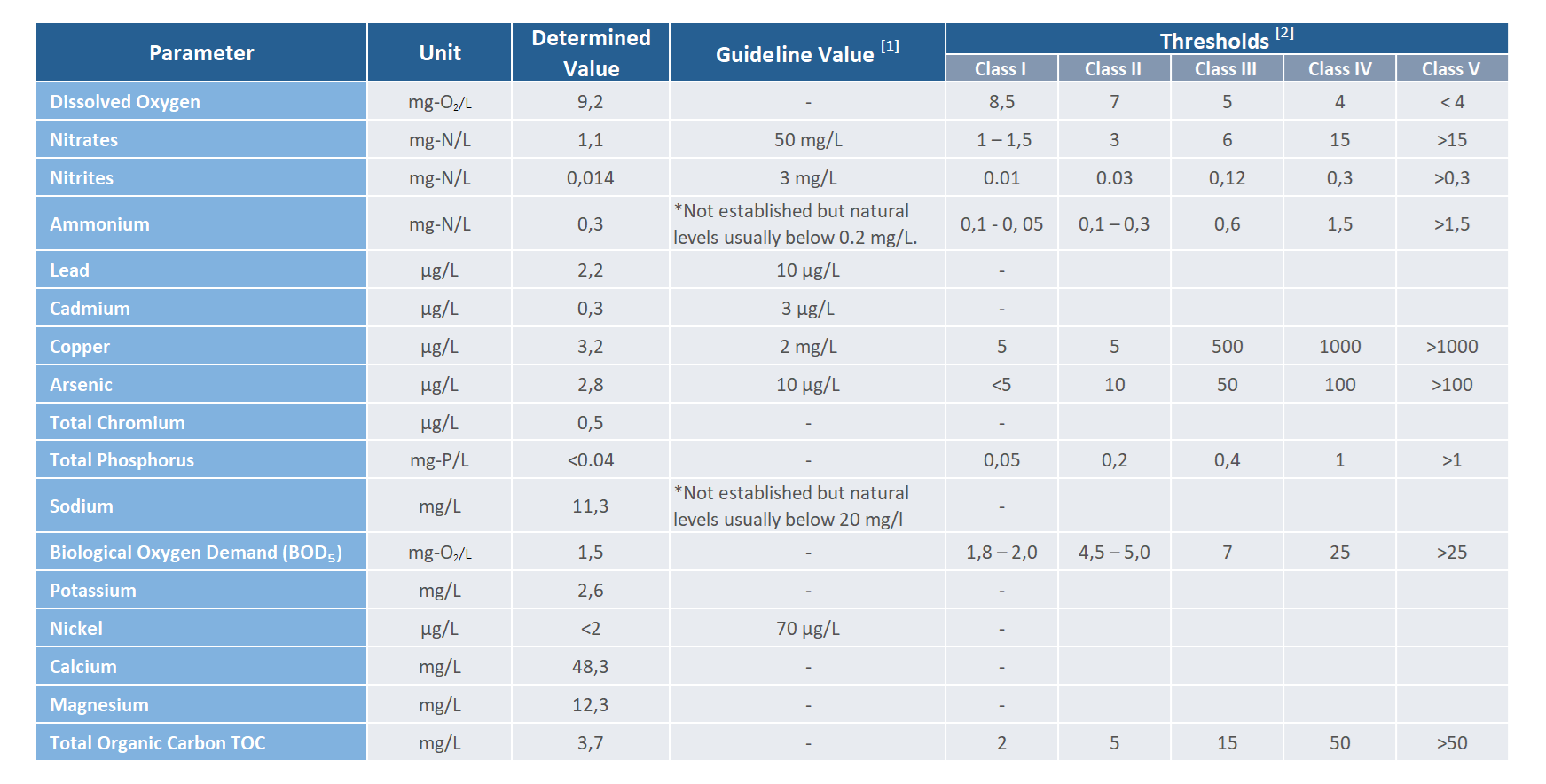Sound and Water Analysis
Burma beach, Novi Sad, Serbia

Sound Analysis
Date: 06.09.2024
Time: 14.00 hrs
Step into a serene setting where warmth and subtle clouds create a perfectly balanced environment. The calm air and gentle ambiance invite you to pause and enjoy the moment:
- Softly Overcast: A touch of cloud cover diffuses the sunlight, casting a gentle, muted glow over the surroundings.
- Warm Embrace: The air carries a comfortable warmth, creating a cozy and inviting atmosphere.
- Peaceful Calm: With no wind to stir the scene, the stillness amplifies the soothing vibe of the day.

Water Analysis

The water quality of the Danube River at Novi Sad, sampled at Burma Beach – NS3, is largely in line with Serbian environmental standards. Most key parameters, including Dissolved Oxygen (9.2 mg-O₂/L), Nitrates (1.1 mg-N/L), Nitrites (0.014 mg-N/L), Total Phosphorus (<0.04 mg-P/L), BOD₅ (1.5 mg-O₂/L), Copper (3.2 µg/L), and Arsenic (2.8 µg/L), meet the criteria for Class I water quality. This signifies excellent ecological status, meaning the water is well-suited for uses such as drinking (with treatment), bathing, recreation, irrigation, and industrial cooling.
However, two parameters—Total Organic Carbon (TOC) and Ammonium (0.3 mg-N/L)—place the water in Class II, which corresponds to good ecological status. While this is slightly below Class I, the water remains suitable for the same uses, with minimal additional treatment required.
For parameters not regulated by Serbian standards, such as Cadmium, Nickel, and Lead, the assessment was based on World Health Organization (WHO) guidelines. All these parameters were well within the recommended limits, indicating no significant risks.
This analysis highlights the Danube River’s overall ability to support environmental and human needs effectively, though continuous monitoring and localized management may help address minor exceedances to further maintain water quality.
For parameters not regulated by Serbian standards, such as Cadmium, Nickel, and Lead, a comparison was made using World Health Organization (WHO) guidelines. All these parameters were within WHO-recommended limits, further demonstrating the water’s overall safety and quality. This analysis confirms that the Danube River at this point supports both environmental health and human use effectively.
References:
[1] World Health Organization (WHO). (2017). Guidelines for drinking-water quality: Fourth edition incorporating the first addendum. WHO. Website: https://iris.who.int/bitstream/handle/10665/254637/9789241549950-eng.pdf?sequence=1
[2] Official Gazette of the Republic of Serbia, No. 50. (2012, May 18) – “Regulations on limit values of polluting substances in surface and underground waters and sediment and deadlines for reaching them”. Website: https://reg-pravno–informacioni–sistem-rs.translate.goog/api/viewdoc?uuid=0c30a698-11e5-4840-83e3-3170a8ad6e02®actid=421895&doctype=reg&_x_tr_sl=auto&_x_tr_tl=sr&_x_tr_hl=en&_x_tr_pto=wapp
